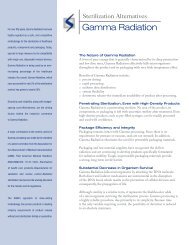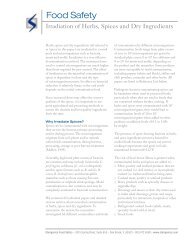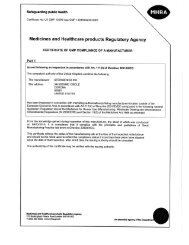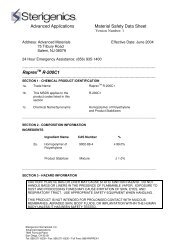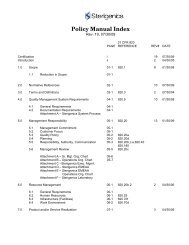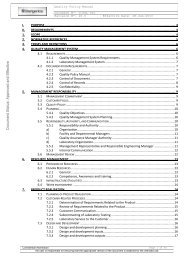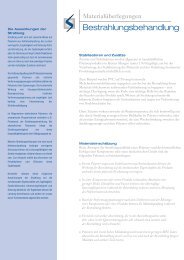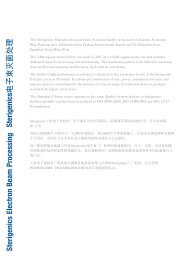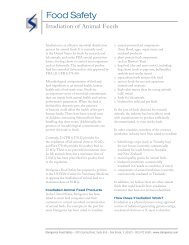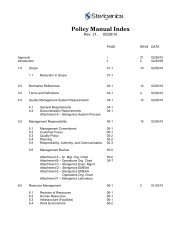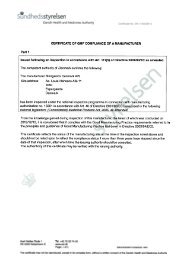The sterilisation of spices, herbs and vegetable ... - Sterigenics
The sterilisation of spices, herbs and vegetable ... - Sterigenics
The sterilisation of spices, herbs and vegetable ... - Sterigenics
You also want an ePaper? Increase the reach of your titles
YUMPU automatically turns print PDFs into web optimized ePapers that Google loves.
<strong>The</strong> <strong>sterilisation</strong> <strong>of</strong> <strong>spices</strong>, <strong>herbs</strong> <strong>and</strong><strong>vegetable</strong> seasonings:Underst<strong>and</strong>ing the options
<strong>The</strong> spice <strong>of</strong> lifeSpices, <strong>herbs</strong>, seeds <strong>and</strong> dehydrated <strong>vegetable</strong> substances bring a world <strong>of</strong>flavours, aromas <strong>and</strong> colours to food.Harvested in the rural reaches <strong>of</strong> places such as India, China <strong>and</strong> Indonesia, <strong>spices</strong><strong>and</strong> <strong>herbs</strong> develop their flavors <strong>and</strong> fragrances by fermenting in the sun, drying inthe open air, <strong>and</strong> through processing techniques such as roasting <strong>and</strong> grinding.Once the appropriate flavours <strong>and</strong> aromas have been attained, the flavouringagents are shipped to brokers around the world using methods <strong>of</strong> transportationranging from open barges to refrigerated trucks.Unfortunately, during their long journey to the table, <strong>spices</strong> <strong>and</strong> <strong>herbs</strong> becomecontaminated with bacteria <strong>and</strong> molds. Bacterial contamination may come fromsoil, insects, bird or rodent droppings or from the water used in processing. Fungalgrowth may occur before or during drying, or during storage or shipping.In any event, the consequences can be significant.
<strong>The</strong> risk<strong>of</strong>contaminationBacterial contaminationBacteria such as Bacillus cereus<strong>and</strong> Clostridium perfringens can causea variety <strong>of</strong> foodborne illnesses.Fortunately, most foodbornepathogens cannot survive modernsanitation measures. Even in case<strong>of</strong> extreme contamination, bacteriathat remain after processing areunlikely to tolerate further cookingor heating.Salmonella has occasionally beenfound in <strong>spices</strong> (such as pepper)<strong>and</strong> herbal teas. Though normallydestroyed by thorough cooking,the Salmonella in <strong>spices</strong> can causeillness when the <strong>spices</strong> are addedto food toward the end <strong>of</strong> thecooking process, when foods areimproperly refrigerated or whenleftovers are improperly stored forseveral days.<strong>The</strong> additional threat <strong>of</strong> pestsPests such as beetles <strong>and</strong> lessergrain borers are also commonlyfound in <strong>spices</strong>, seeds, <strong>herbs</strong> <strong>and</strong>prepared seasonings. Fortunately,since infectious pests are moresusceptible to decontaminationmeasures than bacteria or molds,technology used to controlmicrobial contamination will alsokill pests.Molds <strong>and</strong> fungal growthsLeft untreated, mold can produceaflatoxins, which destroy theflavour <strong>and</strong> colour <strong>of</strong> the ingredients<strong>and</strong> make them unsuitable for use.
Two effectivesolutions<strong>The</strong> world leader in microbialreduction services, <strong>Sterigenics</strong><strong>of</strong>fers the spice <strong>and</strong> food processingindustries a choice <strong>of</strong> twosanitation options: ethyleneoxide (EO) fumigation <strong>and</strong>irradiation processing.While both effectively killorganisms, the challengespresented by the bulk packaging<strong>of</strong> <strong>spices</strong> <strong>and</strong> <strong>herbs</strong> have madeethylene oxide fumigation<strong>and</strong> gamma processing themethodologies <strong>of</strong> choicedue to their efficient, highdensitypenetration.Often, the final destination<strong>of</strong> the spice <strong>and</strong> herb product playsa dominant role in the technologyselection. Although EO fumigationis widely utilised in the US, itis not currently accepted in theEuropean Union.EO fumigation:the original st<strong>and</strong>ard<strong>of</strong> excellenceA trusted means <strong>of</strong> spice <strong>sterilisation</strong>for more than 60 years, ethyleneoxide fumigation uses alkylationas its mechanism <strong>of</strong> action.Usage <strong>of</strong> EO for food sanitationaccelerated dramatically in the1960s with the discovery that EOfumigation could significantlyreduce spoilage organisms in <strong>spices</strong><strong>and</strong> spice blends. From that pointuntil the approval <strong>of</strong> gammaradiation in 1988, EO was thetool <strong>of</strong> choice for herb <strong>and</strong> spicedecontamination in the US.In 2001, the US Food <strong>and</strong> DrugAdministration (FDA) approvedEO as a reconditioning technologyfor detained raw <strong>spices</strong>. Today,EO is also approved for spice blends,but only those that do not includesalt (10CFR §185).In order to ensure an effective result,the EO gas must be able to diffusefreely throughout the product beingtreated, making breathablepackaging a necessity. In addition,because a non-volatile residueremains after processing, an aerationperiod is required to allow theresidue to dissipate. Typically,the aeration process is completewithin 24 hours.Since ethylene oxide processingdoes not require labeling in the US,it remains a favoured sanitationagent for a significant number <strong>of</strong> thecountry’s food processors.Irradiation: today’smost effective <strong>and</strong> mostpreferred choiceIrradiation is achieved eitherby gamma rays, pure energy raysemitted from Cobalt-60 <strong>and</strong>similar in many ways to microwaves,or by accelerated electrons,commonly known as electronbeam (E-beam) irradiation.Approved by the FDA in 1988,gamma processing is the preferredmethod <strong>of</strong> food <strong>sterilisation</strong> inthe US <strong>and</strong> on a global basis.Less harsh <strong>and</strong> intrusive than EO,irradiation uses ionising energyto kill bacteria, mold <strong>and</strong> insectswhile retaining the flavours,colours, aromas <strong>and</strong> antioxidantproperties <strong>of</strong> the flavouringingredients.While it is true that gammaprocessing can affect the sensorycharacteristics <strong>of</strong> some flavouringagents, the extent <strong>of</strong> the effect<strong>and</strong> the dose level required tocause a perceptible change variesby product. Ingredients thathave been stored for a long timeor those whose quality, flavour oraroma are not up to usualst<strong>and</strong>ards may be more affectedthan better quality <strong>spices</strong>.A penetrating sterilant, gammairradiation leaves no area <strong>of</strong>the product or packaginguntreated. Even high-densityproducts such as 250-liter fiberdrums can be readily processedwithout the need for breathablepackaging. Furthermore,gamma rays create no residues,so aeration is not required.
Likely effects <strong>of</strong> irradiationprocessing at various dose levelsTest Dose(in kGy)Ingredients TestedResults4-10 Black pepper, white pepper, turmeric, Coliforms eliminatedrosemary, basil5 Cori<strong>and</strong>er, cumin, turmeric, chili, Starting fungal counts <strong>of</strong> 10 2 -10 6rosemary, basileliminated; coliforms eliminatedGarlic powderWhite pepperNutmegGingerColiforms not detected3.0 log reduction total plate count4.0 log reduction total plate count2.0 reduction total plate count6.5 Paprika, crushed red pepper St<strong>and</strong>ard plate counts
Irradiation in combinationwith other food processingSince <strong>spices</strong> are used in foods thatundergo other processes, it isimportant to know how irradiationworks in combination with theseother treatments. As a rule,irradiation improves the ability<strong>of</strong> subsequent processes to furtherlower microbial contamination.Microbial contamination levelsin irradiated <strong>spices</strong> continueto decline during storagebecause radiation-damagedmicroorganisms cannotreproduce. This has been foundto be true even when storageoccurs at elevated temperatures<strong>and</strong> relative high humidity forseveral months.Microorganisms that surviveirradiation are much moresensitive to heat. As a result,food groups that are heated <strong>and</strong>held at constant temperatures(such as soups from mixesused in food service operations)can have a longer storage life.Surviving micr<strong>of</strong>lora havebeen found to be less resistantto sodium <strong>and</strong> more sensitiveto pH changes, moisture<strong>and</strong> growth temperatures.<strong>The</strong>se sensitivities furtherreduce their ability tosurvive <strong>and</strong> grow inprocessed food products.A look at labelingFederal labeling requirementsmay be a key factor for some USmanufacturers when makingdecisions regarding irradiationmethodology (21 CFR § 179.26).While labeling is not requiredfor food products containing EOprocessedingredients, productsthat have been decontaminatedusing gamma processing mustprominently display theinternational symbol signifyingirradiation—known as the“Radura”—<strong>and</strong> a statement thatthe products have been processedwith irradiation. In the EU, everyirradiated product must be labeledas “ionised.”Not surprisingly, labelingrequirements vary from countryto country:In the U.S., wholesale or bulkpackage labels, invoices orbills <strong>of</strong> lading must includea statement along the lines <strong>of</strong>“treated with radiation—do notirradiate again” if the productis shipped to a foodmanufacturer or processorfor further processing, labelingor packaging.Irradiated spice <strong>and</strong> herbproducts that are merelycleaned, chopped, graded <strong>and</strong>/orrepackaged must retain theirradiation label. However, anirradiated product that is roasted,heat treated or blended withother irradiated or non-irradiated<strong>spices</strong> or ingredients does nothave to be labeled as irradiated.Labeling requirements vary fromcountry to country.Worldwide, the Radura symbol is the consumer’s assurance <strong>of</strong> food safety. Research has confirmedthat, when provided with factual information about food irradiation, consumers will chooseirradiated products with confidence.
Ensuring the highestquality <strong>and</strong> safetyNo matter which sanitation technologyis selected, in order to preventthe contamination <strong>of</strong> finished foodproducts it is important for dryingredients to enter the processing areawith very low bacterial <strong>and</strong> fungalcounts. In most cases, only sterilised<strong>spices</strong> can meet the low plate countsspecified by food processorsmanufacturing under HACCP 1 orISO 2 st<strong>and</strong>ards.Whenever products present a greaterthan average risk <strong>of</strong> foodborne illnessor economic loss from spoilage,processors should use <strong>spices</strong> withthe lowest possible microbialcontamination. Such at risk productsinclude:ready-to-eat foods that areminimally processed <strong>and</strong> do notrequire further cookingrefrigerated foods sold at the retaillevel <strong>and</strong> thoserefrigerated foods used in foodservice operationssnack foods, deli meats <strong>and</strong> cheeses,cooked poultry, meat products, saladdressings <strong>and</strong> refrigerated saladssold at retail.<strong>Sterigenics</strong> International,the <strong>sterilisation</strong> expert<strong>The</strong> world’s leading supplier <strong>of</strong> microbial reductionservices for food products <strong>and</strong> food packaging,<strong>Sterigenics</strong> <strong>of</strong>fers more technologies <strong>and</strong> morelocations than any other provider.With 40 processing centres across North America,Europe <strong>and</strong> Asia, <strong>and</strong> the widest range <strong>of</strong> technologychoices, you can be sure <strong>Sterigenics</strong> is able toprovide technology for every product <strong>and</strong> everyprocessing requirement.To learn more about how <strong>Sterigenics</strong>’ expertise<strong>and</strong> technology can help your company extendproduct shelf life <strong>and</strong> prevent foodborne illness,call 800.472.4508 or visit www.sterigenics.com.1Hazardous Analysis <strong>of</strong> Critical Control Points(HACCP): Irradiation <strong>and</strong> HACCP arecomplementary weapons in the battle to ensurethe safety <strong>of</strong> our food supply. HACCP is a planthat identifies the hazards associated witheach food item <strong>and</strong> determines how each hazardcan be reduced or eliminated. <strong>The</strong> microbialcontamination <strong>of</strong> <strong>spices</strong>, <strong>herbs</strong>, <strong>and</strong> seasoningsis a critical control point in many food-processingoperations.2International Organization for St<strong>and</strong>ardization(ISO): A network <strong>of</strong> national st<strong>and</strong>ards institutesfrom 146 countries.
Related applications Botanicals <strong>and</strong> health supplementsMany suppliers <strong>of</strong> botanical ingredients <strong>and</strong>manufacturers <strong>of</strong> natural health products relyon irradiation to ensure the cleanliness <strong>of</strong> theirproducts—with little or no effect on activeingredients. As reported in 1998, tests <strong>of</strong> irradiationeffects on active components <strong>of</strong> 36 traditionalChinese medicines showed less than a 3% loss<strong>of</strong> active ingredients at doses up to 10.0 kGy.Pet feeds <strong>and</strong> chewsWhen the feed is destined for domestic pets,resident bacteria could affect the health <strong>of</strong> thepet’s human family. Additionally, there have beenmultiple cases <strong>of</strong> children contracting Salmonellosisfrom h<strong>and</strong>ling dog chew treats such as pigs’ ears,bullwinkles, rawhide <strong>and</strong> similar items. Irradiationhas been shown to effectively eliminate thesemicroorganisms.References1. Farkas J. Irradiation <strong>of</strong> Dry Ingredients. Boca Raton, Florida: CRC Press, 19882. Federal Register. April 18, 1986. 21 CFR § 179. Irradiation in theProduction, Processing, <strong>and</strong> H<strong>and</strong>ling <strong>of</strong> Food. Final Rule. pp 13376-13399.3. International Consultative Group on Food Irradiation. Irradiation <strong>of</strong> <strong>spices</strong>,<strong>herbs</strong>, <strong>and</strong> other <strong>vegetable</strong> seasonings—A compilation <strong>of</strong> technical data for itsauthorization <strong>and</strong> control. International Atomic Energy Agency. February 1992.4. Federal Register. August 4, 1994. 10 CFR § 21, Ch.1. Development<strong>of</strong> Hazard Analysis Critical Control Points For <strong>The</strong> Food Industry:Proposed Rule; Vol. 59, No 149, pp 39888-39896.5. U.S. Food <strong>and</strong> Drug Administration, 1995. Irradiation in the Production,Processing <strong>and</strong> H<strong>and</strong>ling <strong>of</strong> Food. Code <strong>of</strong> Federal Regulations, Title 21:pp 388-390.6. Bruhn C.M. 1995 Consumer Attitudes <strong>and</strong> Market Response toIrradiated Foods. Journal <strong>of</strong> Food Protection 58: pp 175-181.7. Council <strong>of</strong> Agricultural Science <strong>and</strong> Technology, 1995 Food BorneIllnesses: Risks <strong>and</strong> Consequences. CAST Report No. 122.8. Diehl, J.F. Safety <strong>of</strong> Irradiated Food, 2nd ed. 1995, M. Dekker, Inc. New York.9. Monk, J.D., Beuchat, L.R., <strong>and</strong> Doyle, M.P. 1995. IrradiationInactivation <strong>of</strong> Food-Borne Microorganisms. Journal <strong>of</strong> Food Protection 58:pp197-208.10. Radomyski, T., Murano, E.A., Olson, D.G. <strong>and</strong> Murano, P.S. 1994.Elimination <strong>of</strong> Pathogens <strong>of</strong> Significance in Food by Low-dose Irradiation:A Review. Journal <strong>of</strong> Food Protection. 57: pp 73-86.11. Thayer, D.W., Josephson, E.S., Brynjolfsson, A. <strong>and</strong> Giddings, G.G.1996. Radiation Pasteurization <strong>of</strong> Food. Council For Agricultural Science <strong>and</strong>Technology Issue Paper. No. 7.12. Urbain, W.M. Food Irradiation. 1986. Academic Press, Inc.Orl<strong>and</strong>o Florida.13. Marcotte, M., Tibelius, C., Effect <strong>of</strong> Irradiation on Microbiology,Chemistry <strong>and</strong> Active Components <strong>of</strong> Botanicals, Traditional Medicines<strong>and</strong> Herbal Products, 1998.2015 Spring Road Suite 650 Oak Brook, IL 60523 USATel 800.472.4508 Fax 630.928.1701Remylaan 4c box 4 3018 Leuven BelgiumTel +32 (0)16 525220 Fax +32 (0)16 525230www.sterigenics.com<strong>Sterigenics</strong> <strong>and</strong> the <strong>Sterigenics</strong> logo are registered trademarks <strong>of</strong> <strong>Sterigenics</strong> International.©2007 <strong>Sterigenics</strong> International RevFS07 Printed in the USA.



